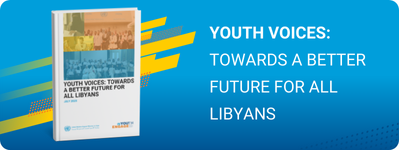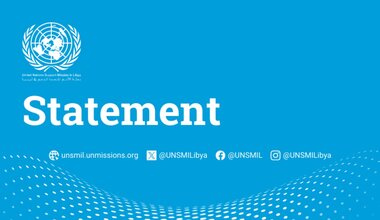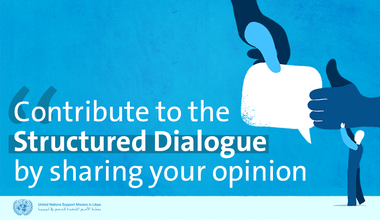Media influence during conflict: Libyan journalists discuss propaganda, bias and misinformation
TRIPOLI – During times of conflict or instability, media can deepen divides and incite violence by spreading propaganda and false information, framing stories in a biased manner, and depicting opponents as evil or less than human. All these tactics are common in Libya, said media professionals during an online discussion of the topic 24 July as part of the United Nations Support Mission in Libya’s Basirah Professional Development Programme.
During the event, Dr. Mohammed Wesam Amer, a fellow at the University of Cambridge and Dean of the Department of Communications at Gaza University, presented some of his research about media coverage of the Gaza war. Forty people, including journalists, media professors and students, and fact checkers from Libya's east, south and west, joined.
“Media in wartime is not a neutral observer,” said Dr. Amer. “It can be a deadly weapon used by different sides to construct realities, justify violence, and direct public opinion locally and internationally.”
Spreading propaganda, or the use of selective or misleading messaging to influence public opinion in favour of military or political agendas, and false information—both innocuously and maliciously—are perhaps the most well-known tactics of media influence, he said.
Other methods include imposing specific interpretations and silencing alternative narratives, or prioritising certain topics while ignoring others, Dr. Amer said.
Using a tactic called “media framing,” he said, Western media may say “Hamas attacks,” while Arab media covering the same story may say “Israeli aggression” or “massacre.” Sanitised language is often used to soften violence—saying “precision strikes” instead of “bombing,” or “collateral damage” instead of “civilian deaths”.
Media may also work to portray the enemy as illegitimate, linked to foreign conspiracies or apply different moral standards to different actors, he said.
It's also important to look out for more subtle influence techniques, such as bias, emotional manipulation and selective reporting, Dr. Amer said. Employing what Dr. Amer calls “dehumanization,” Western media sometimes refer to Palestinian fighters as “terrorists” or “barbarians,” while Arab media sometimes refer to Israeli soldiers as “monsters in human form.”
“Media is not a mirror of war,” he said. “It manufactures narratives.”
In a post-event survey, all but one participant said political bias was a widespread, deeply entrenched issue in Libyan media.
Eighty-five participants indicated they had observed the use of propaganda and media framing among Libyan media. Seventy-six per cent said misinformation and disinformation are a problem, while 71 per cent expressed concern about biased or loaded language. Just under half also expressed concern about dehumanization tactics.
Media ownership by political or armed groups was the most commonly identified driver, among participants, of manipulation tactics (85 per cent). The next most common drivers were pressure or intimidation from powerful actors (67 per cent), lack of training among journalists (62 per cent), and financial incentives, including foreign funding (57 per cent).
These mechanisms of influence make it difficult for the public to distinguish truth from propaganda, misinformation and disinformation, except by comparing sources and critically verifying the content, said Musa Wantiti, a fact-checker from Nalut, who attended the event.
“Arab media does not constitute a real counter to Western media,” he said. “Rather it uses the same tools of influence from a different angle, without offering an independent critical discourse.”
Social media complicates the issue, said Ramadan Al-Kiddar, a journalist from Tripoli. "Everyone has become a ‘media platform’ in their own right,” he said. Manipulation, misinformation and disinformation are just as common in new media—if not more so.
“It’s no longer just the journalist who creates the narrative,” he said. “Now, a child in Gaza with a broken phone can shake global public opinion more than the largest news channel."
The first step to addressing some of these issues is being able to identify them, said Mustafa Walda, a journalist from Misratah.
“In the context of conflict, media is used to steer public opinion and can fuel divisions and justify violence,” he said. “Understanding these techniques helps expose misinformation, protect the public, and enhance the role of media as a tool for truth—not a tool for control.”
 United Nations Peacekeeping
United Nations Peacekeeping UN
UN









